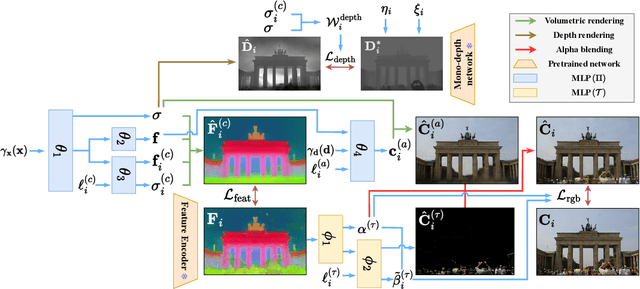Minhyuk Choi
vid-TLDR: Training Free Token merging for Light-weight Video Transformer
Mar 30, 2024Abstract:Video Transformers have become the prevalent solution for various video downstream tasks with superior expressive power and flexibility. However, these video transformers suffer from heavy computational costs induced by the massive number of tokens across the entire video frames, which has been the major barrier to training the model. Further, the patches irrelevant to the main contents, e.g., backgrounds, degrade the generalization performance of models. To tackle these issues, we propose training free token merging for lightweight video Transformer (vid-TLDR) that aims to enhance the efficiency of video Transformers by merging the background tokens without additional training. For vid-TLDR, we introduce a novel approach to capture the salient regions in videos only with the attention map. Further, we introduce the saliency-aware token merging strategy by dropping the background tokens and sharpening the object scores. Our experiments show that vid-TLDR significantly mitigates the computational complexity of video Transformers while achieving competitive performance compared to the base model without vid-TLDR. Code is available at https://github.com/mlvlab/vid-TLDR.
UP-NeRF: Unconstrained Pose-Prior-Free Neural Radiance Fields
Nov 08, 2023



Abstract:Neural Radiance Field (NeRF) has enabled novel view synthesis with high fidelity given images and camera poses. Subsequent works even succeeded in eliminating the necessity of pose priors by jointly optimizing NeRF and camera pose. However, these works are limited to relatively simple settings such as photometrically consistent and occluder-free image collections or a sequence of images from a video. So they have difficulty handling unconstrained images with varying illumination and transient occluders. In this paper, we propose $\textbf{UP-NeRF}$ ($\textbf{U}$nconstrained $\textbf{P}$ose-prior-free $\textbf{Ne}$ural $\textbf{R}$adiance $\textbf{F}$ields) to optimize NeRF with unconstrained image collections without camera pose prior. We tackle these challenges with surrogate tasks that optimize color-insensitive feature fields and a separate module for transient occluders to block their influence on pose estimation. In addition, we introduce a candidate head to enable more robust pose estimation and transient-aware depth supervision to minimize the effect of incorrect prior. Our experiments verify the superior performance of our method compared to the baselines including BARF and its variants in a challenging internet photo collection, $\textit{Phototourism}$ dataset.
 Add to Chrome
Add to Chrome Add to Firefox
Add to Firefox Add to Edge
Add to Edge